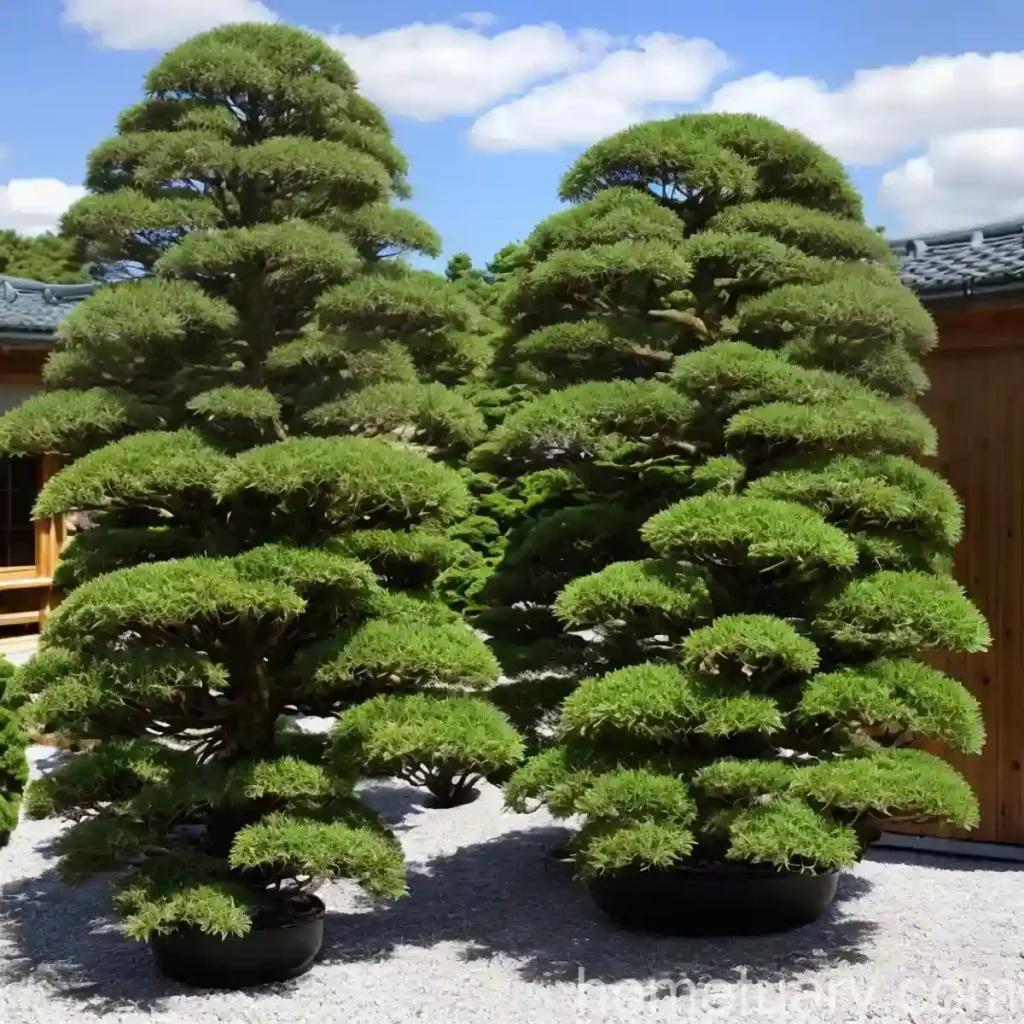Japanese Cedar (Cryptomeria japonica ‘Yoshino’)
Cryptomeria japonica, also known as the Japanese cedar or Yoshino cedar, is a magnificent coniferous tree, native to Japan and China. It is renowned for its impressive stature, elegant appearance, and numerous practical and cultural uses. This blog post aims to provide comprehensive insight into the cultivation, care, and benefits of the Cryptomeria japonica ‘Yoshino’, along with key takeaways, cultural uses, and tips for effective maintenance.
What is Cryptomeria japonica ‘Yoshino’?
Overview of Cryptomeria japonica
- Scientific Name: Cryptomeria japonica
- Common Name: Japanese Cedar, Yoshino Cedar, Sugi
- Family: Cupressaceae
- Origin: Japan, China
Cryptomeria japonica, a perennial, evergreen tree, holds significant cultural and economic value in its native regions of Japan and China. Its exceptional beauty and practical uses have also led to its popularity as an ornamental tree in various parts of the world. The ‘Yoshino’ variety specifically is renowned for its distinctive beauty and numerous applications in landscaping, woodworking, and horticulture.
Key Takeaways – Japanese Cedar (Cryptomeria japonica ‘Yoshino’)
Before delving into the specifics of cultivation and maintenance, let’s highlight the crucial points that encapsulate the essence of Cryptomeria japonica ‘Yoshino’:
– Renowned ornamental evergreen tree
– Distinctive pyramidal form with dense, graceful foliage
– Adaptable to various soil types and climates
– High cultural, landscaping, and commercial value
– Requires minimal pruning and maintenance
– Offers diverse uses, including timber and essential oils
Now that we have gleaned the key takeaways, let’s delve into the comprehensive guide for cultivating and caring for the spectacular Cryptomeria japonica ‘Yoshino’.
Culture
Cryptomeria japonica ‘Yoshino’ thrives in a range of cultural environments, making it a versatile and valuable addition to gardens, parks, and even commercial landscapes.
Water
Cryptomeria japonica ‘Yoshino’ prefers moist but well-drained soil. Proper hydration is essential, especially during its early years of growth. Maintaining consistent soil moisture, particularly during dry spells, is crucial for the health and vitality of the tree.
Sunlight
This variety of Japanese cedar thrives in full sun to partial shade. It is important to ensure that it receives sufficient sunlight for optimal growth and the development of its characteristic graceful foliage.
Fertilizer
As a low-maintenance tree, Cryptomeria japonica ‘Yoshino’ requires minimal fertilization. However, applying a balanced, slow-release fertilizer in early spring can promote healthy growth and foliage color.
Soil
The tree is adaptable to a variety of soil types, including acidic, loamy, or sandy soils. It is essential to ensure good drainage to prevent waterlogging, thereby safeguarding the health of the tree.
Pruning
Minimal pruning is generally necessary for Cryptomeria japonica ‘Yoshino’. However, it is advisable to remove any dead or damaged branches, as well as to shape the tree when necessary to maintain its elegant form.
Uses
Landscape Uses
The Japanese cedar is predominantly valued as an ornamental tree, adding beauty and grace to various landscapes. Its distinguished pyramidal form and rich green foliage make it a captivating centerpiece in gardens, parks, and woodland settings.
Timber and Woodworking
Beyond its ornamental appeal, Cryptomeria japonica is highly prized for its timber, known as “Sugi” in Japan. This valuable wood is utilized in a wide range of applications, including construction, furniture making, and interior finishes.
Propagation
Cryptomeria japonica ‘Yoshino’ can be propagated through several methods, including:
– Seed Propagation: Sowing seeds in well-prepared soil with adequate moisture and light
– Cuttings: Utilizing softwood or hardwood cuttings to propagate new plants with similar characteristics
Container Popularity
While Cryptomeria japonica ‘Yoshino’ can reach substantial heights when planted in the ground, it is also well-suited to container cultivation. Its adaptability to large containers makes it an excellent choice for patios, balconies, and urban gardens.
Common Diseases and Pests
Disease Diagnosis
While relatively resistant to diseases, Japanese cedar may be susceptible to certain fungal infections, particularly in conditions of excessive moisture. Common diseases include root rot and needle blight, which can be managed through proper watering and good airflow around the tree.
Common Pests
The Japanese cedar may face potential infestations from pests such as:
– Adelgids: Sap-sucking insects that can weaken the tree
– Spider Mites: Notable for the fine webbing on the foliage and potential damage
Botanist’s Tips
- To promote healthy growth and vigor, consider mulching around the base of the tree to retain moisture and suppress weed growth.
- Regular monitoring for pests and diseases can aid in early intervention and effective management.
- When planting Cryptomeria japonica, provide ample space for its mature size, allowing the graceful branches to develop fully.
Fun Facts
- Cryptomeria japonica ‘Yoshino’ is the national tree of Japan and holds significant cultural importance in Japanese society.
- The tree’s aromatic wood is utilized in the construction of temples, shrines, and traditional Japanese buildings.
With this profound understanding of the cultivation, care, and uses of Cryptomeria japonica ‘Yoshino’, our exploration offers insights into the remarkable and versatile nature of this iconic tree.
For further details on propagation, landscaping ideas, and practical tips, I recommend exploring the following additional resources:
In conclusion, the Cryptomeria japonica ‘Yoshino’ exemplifies a remarkable balance of ornamental, cultural, and practical significance, making it a cherished addition to diverse landscapes and a celebrated contributor to various industries and traditions.















